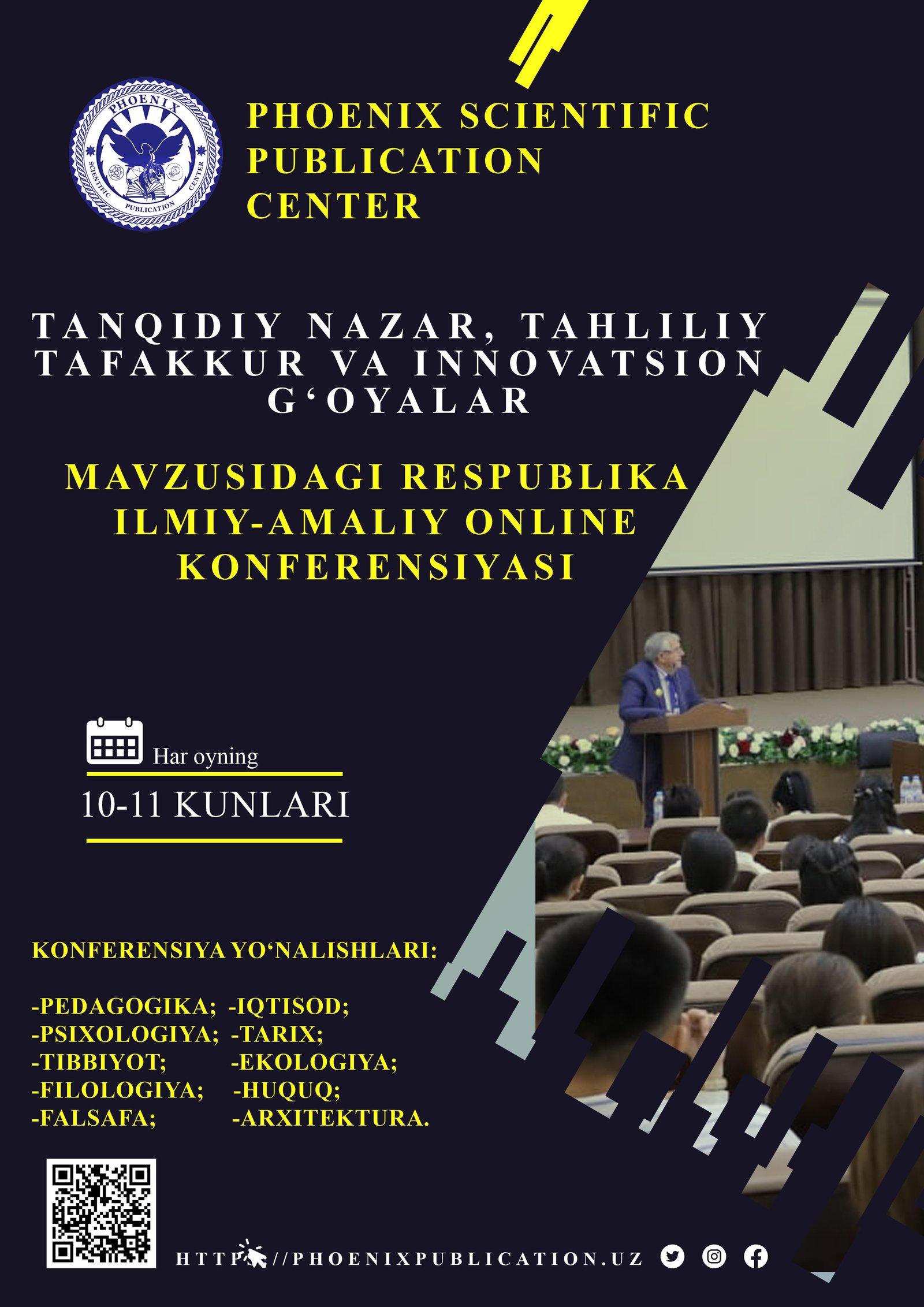Abstract
Phraseologisms are indivisible stable combinations that differ from other common words of the language and have their own literary language norms, as well as their own history of origin. Since the Chinese and Uzbek languages belong to different language families, the lexical-phraseological units in them differ in terms of origin and require extreme caution from the translator when translating literary works between these two languages. Despite this, phraseological units also have many similar features. At the same time, the article draws attention to the fact that research work in world linguistics is being carried out on a large scale in historical-comparative, system-structural and anthropocentric directions, which makes it possible to study the development of language, the changes occurring in it, and the fact that by studying the lexical-stylistic, phraseological and grammatical units found in each national language in a comparative aspect, it is important to systematize the languages being compared in a specific way, and to identify common and different aspects for both.
References
1. Primov, X.Qodirova “Tilshunoslikning dolzarb muammolari” Urganch – 2019, 71 – bet
2. Большой энциклопедический словарь. Языкознание. – М.: Большая Российская энциклопедия, 1998. C. 559.
3. 百科全书 www.baike.cn
4. 徐宗才,应俊玲。外国人说熟语:汉英对照。- 北京:北京语言大学出版社,2005.
5. Хасанова, Ш. (2023). ФЕЪЛ ФРАЗЕОЛОГИЗМЛАРДА ВАРИАНТЛАНИШ (хитой ва ўзбек тиллари мисолида). Oriental renaissance: Innovative, educational, natural and social sciences, 3(23), 127-131.
6. Xasanova, S. (2021). Rus tilshunosligida frazeologizmlarning tadqiqi: rus tilshunosligida frazeologizmlarning tadqiqi. Журнал иностранных языков и лингвистики, 2(7).
7. Xasanova, S. (2022). XITOY VA O ‘ZBEK TILLARIDA FE’L FRAZEOLOGIZMLARINING ANTONOMIYA HODISASI. Oriental renaissance: Innovative, educational, natural and social sciences, 2(Special Issue 29), 188-197.
8. Khasanova, S. A. Q. (2022). Analysis of verb phraseological units in chinese. Asian Journal of Multidimensional Research, 11(5), 280-283.
9. Shaxzoda, X. The development of story of the XVI XVII century and the specific syle of Pu Sungling‘s work. Academicia an international multidisciplinary research journal. DOI, 10, 2249-7137.
10. Qizi, K. S. A. (2024). PHRASEOLOGICAL UNITS EXPRESSING THE SITUATION. European International Journal of Philological Sciences, 4(02), 16-18.
11. qizi Khasanova, S. A. (2024). PHRASEOLOGISMS RELATED TO THE WAY OF LIFE OF A PERSON. CURRENT RESEARCH JOURNAL OF PHILOLOGICAL SCIENCES, 5(02), 19-22.
12. qizi Khasanova, S. A. (2024). VERB PHRASEOLOGISMS EXPRESSING POSITIVE AND NEGATIVE FEELINGS IN UZBEKI AND CHINESE LANGUAGES. The American Journal of Social Science and Education Innovations, 6(02), 22-24.
